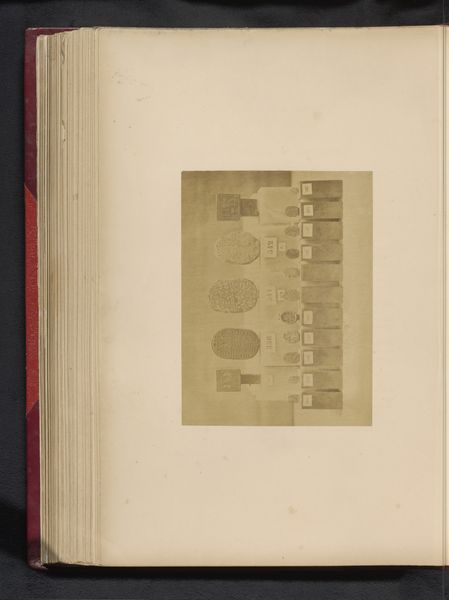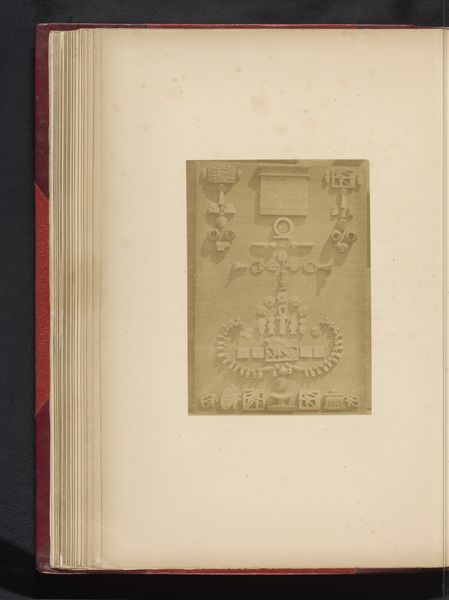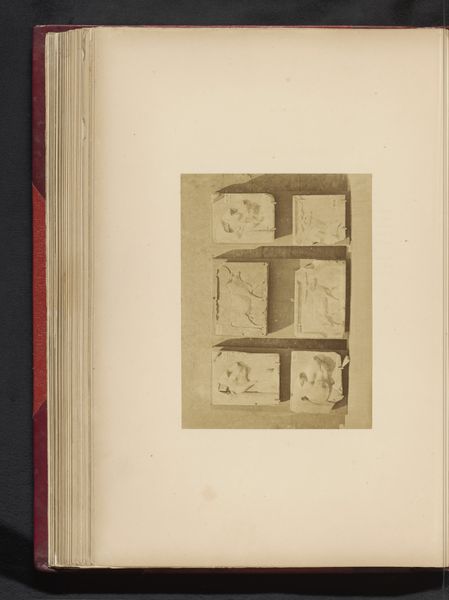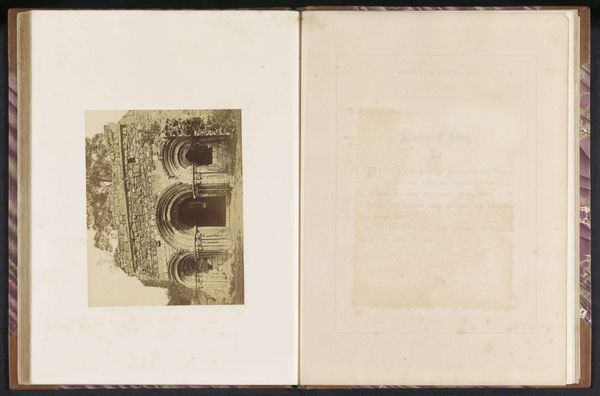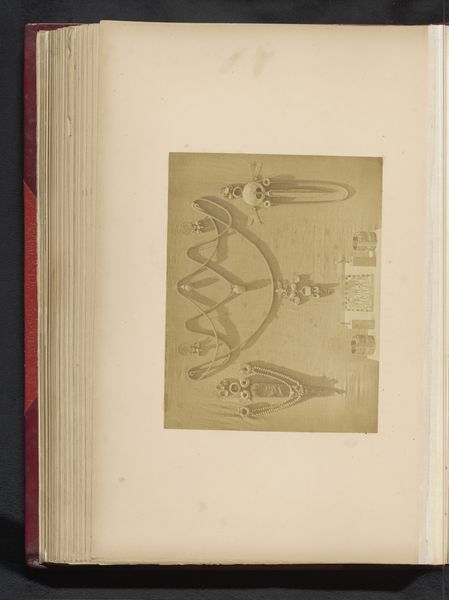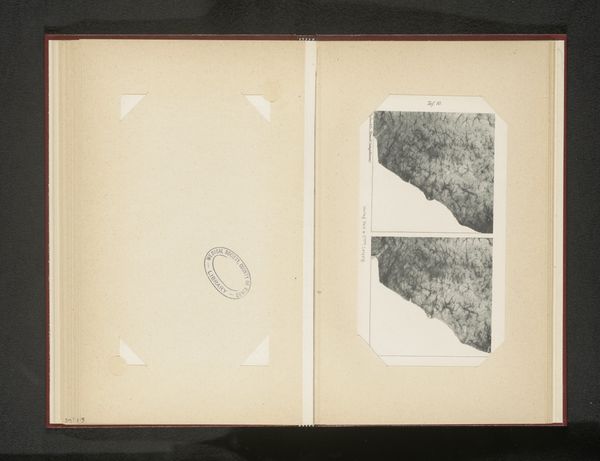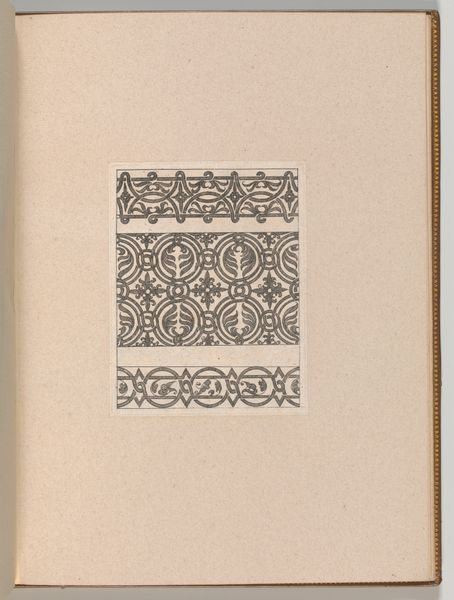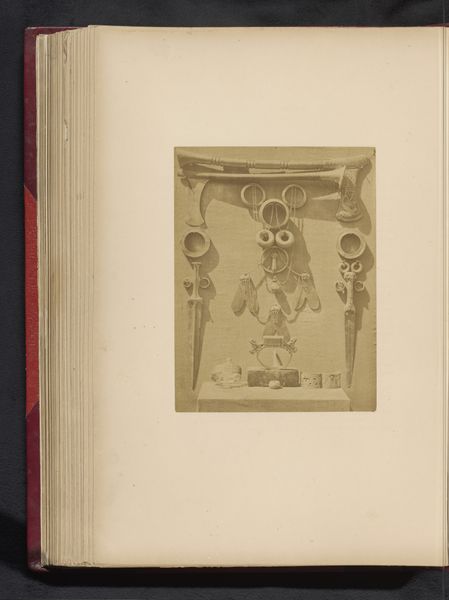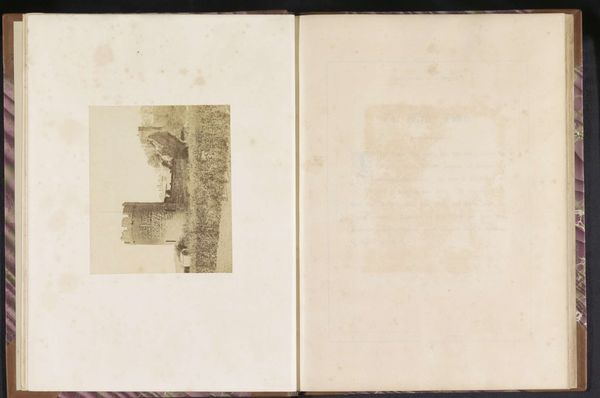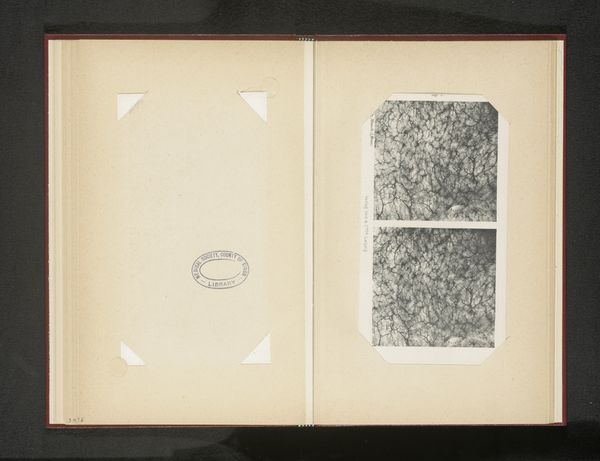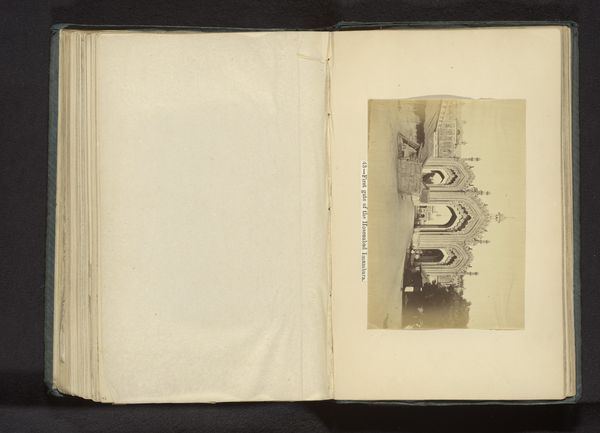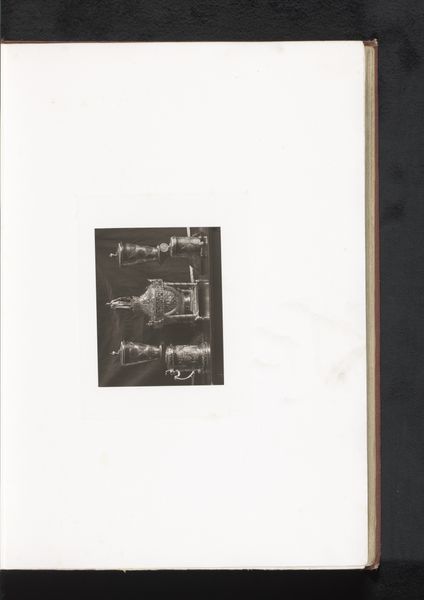
Sieraden gevonden in Abydos, opgesteld in het Boulaq Museum in Caïro, Egypte before 1871
photography, albumen-print
still-life-photography
ancient-egyptian-art
photography
ancient-mediterranean
albumen-print
Dimensions: height 175 mm, width 223 mm
Copyright: Rijks Museum: Open Domain
Curator: This albumen print by Hippolyte Délié, dating from before 1871, showcases jewelry discovered in Abydos, arranged in the Boulaq Museum in Cairo, Egypt. Editor: Wow, there's an ethereal quality to this image. It feels like gazing into an archive, maybe finding trinkets in my attic – and, yet, these little things have such heft and elegance. They definitely tell a story of another time, a bygone era, with all these gold bracelets and artifacts placed carefully as for a museum display. Curator: Precisely, and in its staging and careful composition it foreshadows not only future archaeological studies, but also the growing understanding of global material culture that emerges in this period. Think about the context. Délié, a key figure in early Egyptian photography, documents this collection during a time of intense Western interest in ancient Egypt. Editor: Right, the photo seems to speak to some early understanding of composition! I am no historian, so my associations may come as purely emotional ones, but how the photograph frames each little token, bracelet, ring, tool... The soft light almost enshrines each and gives each one importance beyond mere ornamentation, each element a fragment in some symbolic key. It definitely reads "ancient," as if you're pulling things directly from King Tut’s Tomb yourself, no offense to contemporary Egyptians… Curator: None taken. It's important to note that Délié’s work isn't simply neutral documentation. His framing, the arrangement of the artifacts—it all reflects a particular gaze, a European fascination with, and perhaps a subtle claim over, Egyptian history. Even this seemingly simple still life operates within complex power dynamics, wouldn't you agree? Editor: Of course. As viewers, we become implicated in those dynamics. But even if the arrangement reflects cultural appropriation, I can still respond aesthetically. You look, and you project back your feeling for lost epochs or fallen regimes. So here’s to hoping folks in the here-and-now get back what rightfully belongs to them, you know? Anyway, this photo just brings about so many visions! Curator: Indeed, from questions of representation, access, ownership— it also spurs a creative imagination, to see ourselves within the grand narratives that inform material and cultural history, Editor: Well, it's really made me consider how art helps us relate with history—beyond museums and academic contexts, it is about forming our identity with all its potential richness.
Comments
No comments
Be the first to comment and join the conversation on the ultimate creative platform.
